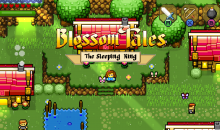13A Hack: Player Driven Relationship Rolls
The 13th Age core book details three main uses for Icon relationship dice: rolling at the start of every session for improvisational guides, rolling for dramatic events, and rolling for discovery and surprise when the players go off the prepped course. The latter two are brilliant; they successfully allow players to see how their character’s personal relationships shape the story when they turn an important and perhaps unplanned page in their adventure. But I’ve always felt that the improvisational use has needed fleshing out and clarification.
In practice, when the players roll their Icon relationship dice at the beginning of the session they’re not just rolling for group-wide improv inspiration, they’re actually rolling for unique and personally tailored resources. The book makes it clear that the players, not just the GM, can use these relationship rolls to gain secrets, magic items, narrate flashbacks, and more. It’s an exciting prospect that’s bursting with potential but the rules are unclear how these powers are shared, how they interact with mechanically concrete things like combat and skill checks, and what guidelines there are for building the narrative together.
This player driven relationship roll rules hack is designed to address this ambiguity but keep the spirit of this the relationship rolls intact. These clarifications aren’t limiting player or GM options, they’re giving the players a powerful tool to leave their mark in a session’s story and to use those Icon relationships to their fullest. Let’s flesh out those start of session relationships rolls so they can be the player driven, narrative sharing, compelling resource that they should be!
What You’ll Need
![]() You will need a small number of two different kinds of tokens. Small glass tokens of two different colors will do, differently colored poker chips, or two different kinds of coins. One type of token will represent “unambiguous tokens”, or a 6 on the Icon relationship roll. The other type will represent “complicated tokens”, or a 5 on the Icon relationship roll.
You will need a small number of two different kinds of tokens. Small glass tokens of two different colors will do, differently colored poker chips, or two different kinds of coins. One type of token will represent “unambiguous tokens”, or a 6 on the Icon relationship roll. The other type will represent “complicated tokens”, or a 5 on the Icon relationship roll.
You should also print out an Icon Relationship card for each of the individual relationships each PC has. You may want to slide them into protective sleeves designed for collectable cards after filling them out.
[bs_icon name=”glyphicon glyphicon-file”] Icon Relationship Cards PDF (with background)
[bs_icon name=”glyphicon glyphicon-file”] Icon Relationship Cards PDF (without background)
Rolling Icon Relationship Dice
When the characters are created (or when this hack is introduced into an ongoing game) each of the players will fill out a card for each their individual relationships. They need to fill in the name of the Icon and circle the type of relationship.
At the start of each session all of the player will roll their Icon relationships dice just like in the core rules. Then:
- For every 6 rolled place an unambiguous token on the respective card.
- For every 5 rolled place a complicated token on the respective card.
[bs_well size=”md”]Generosity the wizard fills in two cards, one for her 2 point positive relationship with the Archmage and one for her 1 point conflicted relationship with the Lich King. At the beginning of a session she rolls a 5 and a 6 for the Archmage and a 3 for the Lich King. She puts one unambiguous token (represented by dimes in her group) and one complicated token (a penny) on her Archmage card. No tokens are placed on the Lich King’s card.[/bs_well]![]()
Spending Tokens
At any time a player can spend a token from one of their Icon Relationship cards to describe how their personal relationship with their Icon is providing them a benefit. The player can choose from one of the following benefits:
- Reroll any d20 the player just rolled, keeping the result they like the most.
- Add a +5 bonus to any d20 the player just rolled.
- The player can introduce a new story element of their design that allows the party to attempt to solve a problem in a creative way.
If the player spends an unambiguous token the benefit is gained without trouble. If the player spends a complicated token then the GM will introduce a twist either right after they gain the benefit or later on in the story.
[bs_well size=”md”]Generosity’s party has been ambushed by medusa scouts! She was struck by a petrifying gaze earlier in the fight and just rolled a 3 on her fatal last gasp save. Generosity spends a token from her Archmage card, recalling how she witnessed a wizard from Horizon stave off petrification from a cockatrice bite by redirecting arcane energies to the still-alive flesh until he could be saved, which she immediately tries to emulate. She crosses her fingers and rerolls the last gasp save.[/bs_well]
[bs_well size=”md”]The party finds themselves unable to avoid a confrontation with the massive stone golem guarding the jungle temple. As it rumbles to life, Generosity levels her staff and casts lightning bolt. Her player rolls a total attack roll of 16, just under the golem’s PD. Not wanting to waste her daily spell she spends a token from her Archmage card to narrate how her arcane sight allows her to locate the bubbling arcane core within the stone golem’s chest. That core would be vulnerable to a lightning bolt, if it’s hit just right. Spending a token Generosity gets a +5 bonus to the attack roll, making it hit![/bs_well]
[bs_well size=”md”]Followed by agents of the Lich King, Generosity and her party are looking to find quick and discrete transport to the peak of Starport hundreds of miles away. Generosity spends a token from her Archmage relationship to find someone that can teleport them the entire distance.
Generosity: I want to find a wizard that can teleport us directly to Starport so we can’t be followed.
GM: I didn’t even know that was possible! Who knows how to teleport, and why isn’t teleportation happening all the time in the Dragon Empire already?
Generosity: Probably an old contact from the wizarding college. Also, teleportation is unpredictable and dangerous and takes a top notch wizard to control.
GM: Awesome. Why would a top notch wizard do this for you? Sounds like a major service you may have to do a favor for.
Genersity: Oh no, he’s not top notch. He was kicked out of the college for doing strange experiments with time and space. But I believe he can get us there.
GM: Sounds great. You find your contact and he’s eager to finally be able to do an experiment with living subjects. Tell me where you find him and I’ll take it from here.[/bs_well]
Rerolling and Adding a +5 Bonus
Players can choose to reroll or add a +5 bonus to any single d20 just rolled. That includes attack rolls, skill checks, saving throws, death saving throws, disengage checks, recharge rolls, etc. Players can’t combine the reroll and the +5 bonus, nor reroll more than once or give multiple stacking +5 bonuses. See “Spending Multiple Tokens at a Time” below.
Introduce a New Story Element
Easily the most exciting option, a player can spend a token to conjure up a story element to take the plot in a new direction. When a player spends a token in this way they’re drawing upon their character’s personal relationship with an Icon and the Icon’s domain to shape the world in a meaningful way. The player needs to clearly state what they want out of this new story element as they spend their token. Then they need to narrate the new story element, bringing it to life for themselves and the rest of the group. The GM should ask questions to get a better feel for the new story element and how to weave it into world. Questions of how, why, and who should flesh out new element and place it within the larger picture of the campaign. (How does this new story element fit in with what the party knows about the world? What the Dragon Empire knows? What the other Icons know?) Table talk is encouraged, other players should jump in with their own questions and even include their own player characters with the narrating player’s permission. By the end of the questioning, the party should be eager to draw on this new story element and the GM should be thinking of all the new challenges that couldn’t have been created until the moment that story element came into existence.
When a token is spent the authority shifts from the GM to the player, if only for a short time. Normally, the players are asking the questions and the GM is providing the answers. When a new story element is being conjured by a player, the player is providing the answers instead. Imagine that the GM has passed the mic to the player for a bit and is now joining the audience. Work together as a group to make sure that new story elements are a beginning, not an end. Even if a new story element gets the player what they want, they should still guide the story in a new player-born direction that is exciting and full of adventure.
[bs_well size=”md”]What is a new story element? It could be an old contact that owes you one, a secret passage into the fortress, a nursery rhyme with a clue for fighting the beholder, a damning vice to leverage against the Imperial Governor, a constellation whose starlight reveals the ancient path, a loyal village dog that distracts the goblins for just long enough for the rogue to try to sneak away.[/bs_well]
Viability and Transparency
In the spirit of 13th Age’s other limited resources, the GM needs to let the players spend a token to reroll a d20 after it’s known that the original roll would have failed. The GM also needs also be honest as to whether or not a +5 bonus would make the difference between success and failure. These tokens are there to allow players to succeed in the face of unlikely odds and bad luck, not to dupe them into spending a resource when it wouldn’t matter.
Spending Multiple Tokens at a Time
Typically, a player shouldn’t be able to spend more than one token on a single check, as spending a token requires at least a short narration of how the Icon relationship grants you that specific bonus. (Not “grants as many bonuses as I need right now until I succeed”.) Players can’t spend multiple tokens to get the +5 bonus more than once on a single check, nor reroll a check more than once, nor combine the reroll with the +5 bonus. Players should also technically not be able to spend more than one token to introduce more than one story element at a time, but story elements should grow and be expanded upon generously as needed.
Unused Tokens
Unused tokens are lost at the end of each session if they are not used.
Are the Rolls Still Improv Inspiration?
Absolutely! This system does not prevent GMs from using the beginning of session relationship roll to shape the session. The player driven mechanics are simply laid on top of that improv inspiration, GMs are free to give out information, magic items, and introduce contacts and threats based on the rolls as they please. If desired, GMs can still fill in a worksheet like the one found on page 180 in the core book as a guide to fill the session with Icon-specific adventure.
Complicated Token Twists
When a complicated token is spent by a player the GM needs to introduce a twist either right away, if something immediate makes sense, or later on in the adventure. Twists shouldn’t negate the bonus the players just received, nor should they get them into trouble that’s wildly worse. This rules out giving a condition (like dazed) to a player that just rerolled an attack roll, it’s just not fun.
Twists will likely depend more on the fiction than the mechanical benefit gained by the player, and the GM should ask questions (similar to introducing a new story element) to inspire a twist if needed. It’s also not out of bounds for the GM to ask “how does the Crusader’s commander know you, and why is that a very bad thing?” If the token spending player has an idea for a twist the GM should run with it! Ideally, the twist should directly spring from the Icon and player involved but it’s not a requirement; GMs shouldn’t be afraid to occasionally mix things up in a truly surprising way or introduce a straightforward complication like “yes, even more goblins”.
Here are a few options for twist inspiration:
- Change the environment in a way that will cause trouble.
- Take a fictional element of their narration and create unforeseen trouble.
- Reveal an unwelcome past or relationship.
- Introduce or foreshadow a threat that now is paying attention to the party.
- Create an obligation or demand from the Icon’s organization with consequences. (Could be an immediate demand or a demand left for a future golden opportunity.)
- Cause trouble for the party’s friends, contacts, and favorite settlements.
[bs_well size=”md”]Let’s imagine that Generosity spent a complicated token to introduce the wizard that could work some risky teleportation magic to get the party to Starport. The GM thinks for a moment, wondering if she wants to pocket the twist until later, but she has a good idea for immediate action. The party is teleported to Starport without their enemies knowing of the journey, because that’s what the player stated she wanted out of the token. However, the GM describes that the party finds themselves teleported to a location within Starport, in glassy ice tunnels burrowed into the mountain’s glaciers. The echos of chittering rhemoraz can be heard in the darkness. This is an example of a fictional element being a source of unforeseen trouble. The new story element is successful and has moved the story forward in a fun player narrated way, and the GM adds in a twist that doesn’t undo or contradict what the player wanted, demands immediate attention, and kicks off a new adventure![/bs_well]
[bs_well size=”md”]Perhaps Generosity spent a complicated token to add +5 to her attack roll against that that temple guardian stone golem, targeting the bubbling arcane core within its chest. The lightning bolt hits, but the arcane core within the golem magnifies the magic wildly! Unnaturally swift storm clouds start to build in the sky above the fight. This effect shouldn’t immediately impact the fight mechanically but the rain that starts after the encounter will certainly impact the dungeon crawl in the jungle temple. This definitely changes the environment in a way that will cause trouble: swift moving waters pulling PCs towards pit traps, damp soil pushing giant dire beetles up to roam, and jungle beasts on edge thanks to rumbling thunder will shape the rest of the adventure.[/bs_well]
Interacting with Class Abilities
Most of the abilities that adjust Icon relationships in the core book will play extraordinarily well with this new system. When in doubt, rerolled dice should give the opportunity to gain tokens mid-session (see the paladin’s Way of Evil Bastards talent) and new points of relationship interact normally with the beginning of session rolls (see the bard’s Balladeer and the rogue’s Smooth Talk talents).
Created and Shared Under the 13th Age Community Use Policy
This rules hack uses trademarks and/or copyrights owned by Fire Opal Media, which are used under the Fire Opal Media, 13th Age Community Use Policy. We are expressly prohibited from charging you to use or access this content. This rules hack is not published, endorsed, or specifically approved by Fire Opal Media. For more information about Fire Opal Media’s 13th Age Community Use Policy, please visit www.fireopalmedia.com/communityuse. For more information about Fire Opal Media and 13th Age products, please visit www.fireopalmedia.com and www.pelgranepress.com.






I should have thanked you years ago for posting this. It greatly influenced how I use icon relationships in my game, and I’ve pointed others to it repeatedly since then.
Looks like the link to the files are missing, but this is great advice! Going to incorporate into my upcoming 13th Age campaign!